
Concept explainers
(a)
To show the difference between the output of the array when it is passed as an array for BUILD-MAX-HEAP and BUILD-MAX-HEAP'.
(a)
Explanation of Solution
Given Information: A heap that has n-elements.
Explanation:
Pseudo code for BUILD-MAX-HEAP is given below:
| BUILD-MAX-HEAP( A ) |
| A.heapsize = A.length |
| for i = A.length/2 downto 1 |
| MAX-HEAPIFY( A,i ) |
Consider an array A= {1, 2, 3, 4, 5, 6}. If the above
The for-loop will iterate from 3 to 1.
At i=3 , MAX-HEAPIFY will be called with arguments as array A and i=3 . The following pseudo code for MAX-HEAPIFY is as follows:
| MAX-HEAPIFY( A,i ) |
| l = LEFT( i ) |
| r = RIGHT( i ) |
| ifl <= A.heapsize and A[l]> A[i] |
| largest = l |
| Else |
| largest = i |
| ifr <= A.heapsize and A[r]> A[largest] |
| largest=r |
| iflargest != i |
| exchange A [ i ] with A [ largest ] |
| MAX-HEAPIFY( A,largest ) |
Currently at i=3 , A [3]=3 and have the following tree:
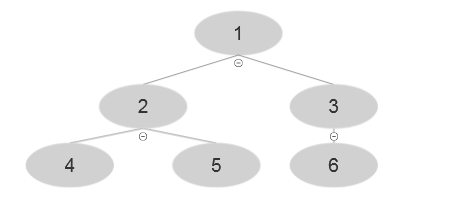
At the end of the iteration:
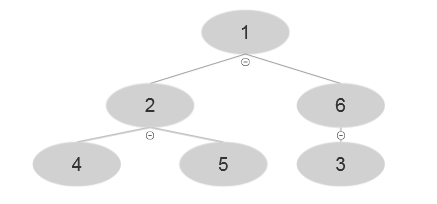
At i=2 , A [2]=2 and after executing the algorithm, the following tree is evolved:

At i=1 , A [1]=1 and after executing the algorithm, the following tree is evolved:
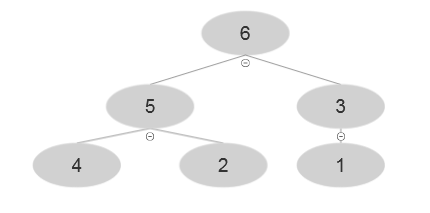
Resultant array after BUILD-MAX-HEAP is A= {6, 5, 3, 4, 2, 1}
However, according to the question, the algorithm for BUILD-MAX-HEAP ', there is an alteration in A.heapsize, which is by default 1. Moreover, the value of i starts from 2 and goes on till A.length that is 6.
At i=2 , A [2]=2. The tree is given below-

Look at the algorithm of BUILD-MAX-HEAP' . It is using MAX-HEAP-INSERT. So, it becomes-
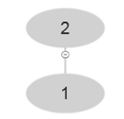
At i=3 , A [3]=3 and after using MAX-HEAP-INSERT
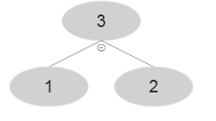
At i=4 , A [4]=4 and after using MAX-HEAP-INSERT

At i=5 , A [5]=5 and after using MAX-HEAP-INSERT
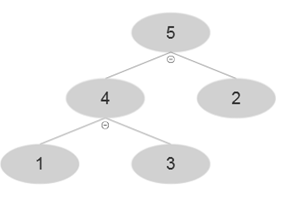
Finally at i=6,A [6]=6 and after using MAX-HEAP-INSERT

Resultant array after BUILD-MAX-HEAP' is A= {6, 4, 5, 1, 3, 2}
Hence, the resultant array after BUILD-MAX-HEAP and BUILD-MAX-HEAP' is not the same.
(b)
To determine the worst case scenario for BUILD-MAX-HEAP' while entering n-elements.
(b)
Explanation of Solution
The BUILD-MAX-HEAP' has MAX-HEAP-INSERT in it, which has worst case of Θ(log n). The call to this function is done for n-1 times, since it is not considering the parent node here.
The worst case for MAX-HEAP-INSERT happens when an array is sorted in ascending order.
Each insert step takes maximum Θ(log n ) steps, and since it is done for n times, it takes a worst case of Θ(nlog n ). Each iteration in the new block is actually taking more time as the older version as it has more iteration in it. The new block will work in even work in even worse case as it has the usage of other algorithm as well.
Want to see more full solutions like this?
Chapter 6 Solutions
Introduction to Algorithms
- for the following sequence of keys, do the following: MBX, EXB, GBX,…, ABX, AXB,…, QXB, YXB, … . 3. Build a max- Heap showing all steps in details.arrow_forwardA 4-ary max heap is like a binary max heap, but instead of 2 children, nodes have 4 children. A 4-ary heap can be represented by an array as shown in Figure (up to level 2). Write down MAX_HEAPIFY(A,i) function for a 4-ary max-heap that restores the heap property for ith node.arrow_forward(where a letter means insert and an asterisk means remove the maximum). Suppose these operation are performed on an initially empty max-oriented heap (max-heap). Draw the sequence of heaps that results from these operations. 1. P 2. R |-> R 3. R 4. R |-> P I O I 6. R |-> R 7. P |-> P I. 8. |-> 5.arrow_forward
- Construct a max heap using the BUILD-MAX-HEAP procedure from the input array H = {1, 3, 5, 7, 15, 11, 13, 9). After building the max heap, answer the following questions. Numeric answers must be encoded as Arabic numbers. For example, if the answer is 5 you should encode the number 5 (not the word "five"). If the answer is none, write none. 1. What is the root node of the resulting max heap? 2. What is the left child of node 7? 3. What is the right child of node 9? 4. What is the left child of node 13? 5. What is the parent of node 1?arrow_forwardA min-heap is useful when we are interested in the minimum value of aset of numbers. Now, instead of the min, we are interested in the K-th smallest value. a.) Please design a data structure to allow the following two operations: push (insert a newnumber) and find_Kmin (return the value of the K-th smallest number without removing it). Bothoperations should be done in O(log K) time. b.) In addition to push and find_Kmin, now we also want to support the pop operation toreturn and remove the K-th smallest element. Please design a data structure to support these threeoperations, and each operation should take O(log n) time with n being the size of the current set.arrow_forward4. Given an array, arr[] = {90, 15, 10, 7, 12, 2), does this array represents a Max-Heap? if it does, draw this max-heap.arrow_forward
- Problem 11: Max heap Build the Max heap with the values: 10, 47, 40, 100, 52, 72. Show the heap after each insertion.arrow_forwardpython This question is on heapsort. (a) We aim to construct a max heap based on an array A. When we call heapify(A,i) for i > size(A)/2, what will happen? (b) Assuming the elements in the array A are in a decreasing order, what is the running time of heapsort on A (using a max heap when constructing the heap)?arrow_forward**In JAVA please** Construct a Binary HEAP for 5000 random ints numbers which are between 0 and 50000. These numbers need to be generated by a random function. Construct Binary HEAP by inserting(using Insert()) the input elements one at a time, into an initially empty binary heap using insert operation. (This should be a different method from the "linear-time algorithm" to build a heap)arrow_forward
- Design a data type that supports insert in logarithmic time, find the median in constant time, and delete the median in logarithmic time.Hint: Use a min-heap and a max-heaparrow_forward2.) C [10] = {5, 1,2,8,6,10,3,9,4,7} heap size = 10 Do Heapify (C, 1). What the values in the array C starting from the index 0 to 9?arrow_forward4. Draw a new heap that is created by inserting 52 into the following heap: 100 71 67 68 50 44 51 60 49 25 30arrow_forward
 Database System ConceptsComputer ScienceISBN:9780078022159Author:Abraham Silberschatz Professor, Henry F. Korth, S. SudarshanPublisher:McGraw-Hill Education
Database System ConceptsComputer ScienceISBN:9780078022159Author:Abraham Silberschatz Professor, Henry F. Korth, S. SudarshanPublisher:McGraw-Hill Education Starting Out with Python (4th Edition)Computer ScienceISBN:9780134444321Author:Tony GaddisPublisher:PEARSON
Starting Out with Python (4th Edition)Computer ScienceISBN:9780134444321Author:Tony GaddisPublisher:PEARSON Digital Fundamentals (11th Edition)Computer ScienceISBN:9780132737968Author:Thomas L. FloydPublisher:PEARSON
Digital Fundamentals (11th Edition)Computer ScienceISBN:9780132737968Author:Thomas L. FloydPublisher:PEARSON C How to Program (8th Edition)Computer ScienceISBN:9780133976892Author:Paul J. Deitel, Harvey DeitelPublisher:PEARSON
C How to Program (8th Edition)Computer ScienceISBN:9780133976892Author:Paul J. Deitel, Harvey DeitelPublisher:PEARSON Database Systems: Design, Implementation, & Manag...Computer ScienceISBN:9781337627900Author:Carlos Coronel, Steven MorrisPublisher:Cengage Learning
Database Systems: Design, Implementation, & Manag...Computer ScienceISBN:9781337627900Author:Carlos Coronel, Steven MorrisPublisher:Cengage Learning Programmable Logic ControllersComputer ScienceISBN:9780073373843Author:Frank D. PetruzellaPublisher:McGraw-Hill Education
Programmable Logic ControllersComputer ScienceISBN:9780073373843Author:Frank D. PetruzellaPublisher:McGraw-Hill Education





